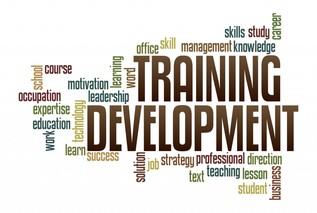
It’s imperative that businesses understand why a training program needs to be evaluated. Some of the reasons I have listed below:
- To identify the program’s strengths and weaknesses
- To assess whether content, organisation and administration of the program contribute to learning and the use of training content on the job
- To identify which trainees benefited most or least from training
- To gather data to assist in marketing training programs
- To determine the financial benefits and costs of the program
- To compare the costs and benefits of training versus non-training investments
- To compare the costs and benefits of different training programs to choose the best program in future
There are two methods of evaluation which every company should follow:
Formulative Evaluation
Also known as internal evaluation, this method of evaluation should be done while the training is in progress as it focuses on the benefits of the process.
Summative Evaluation
Also known as external evaluation, this system assesses the value of the training program and the outcomes that follow.
The most influential studies on the evaluation of training have been done by Professor Donald. L. Kirkpatrick who developed the four level training evaluation model which many businesses follow today.
The principles of the model fall into the following categories:
Reaction – this may best be defined as getting feedback on how much the trainees liked the training program overall. This can be measured throughout the training and at the end by speaking to staff members and handing out surveys.
Learning – discover the principles, facts and techniques that were understood and observed by the participants at the end of the training. Speak to the trainer about topics that were covered and discuss new methods with employees that they learnt throughout the program.
Behaviour – evaluate the changes in on the job behaviour from staff members. These changes are generally acquired in training and then hopefully transferred to the workplace. Also find out what new skills the trainee developed and how they are using this in everyday tasks. Behaviour is most easily evaluated through watching and listening to staff members as they carry out tasks. Speaking to management about changes in employee behaviour is also paramount to this.
Results – analyse the effect on the company due to the training. This can be done through looking at possible reduction of overall costs, reduction of staff turnover and absenteeism, increase in quality of work and improved morale within the workplace.
It’s always important for businesses to look back at their key objectives for investing in training and then compare the latter results with previous findings. Tracking the variables before and after training validates progression and development efforts. A lot of the time, assessing the impact doesn’t necessarily come down to an increase in overall profit. For example:
Supervisor and Management training outcomes could be:
- Increased work output
- Reduced absenteeism
- Reduced cost of new staff
- Increased number of employee engagement
Sales training results may take into account:
- Rise in sales volume
- Increase in average size of each sale
- Upturn in cross selling or add-on sales
- Increased call to close ratio
- A higher ratio of new accounts to old accounts
Customer Relations training should result in:
- More accurate orders being documented
- Size of orders being increased
- Adherence to credit procedures
- More satisfied customers
- Increase in repeat business
- Growth in customer referrals
- Decrease in customer complaints
Changes in business do not occur overnight so CEO’s need to remember to be patient. Businesses need to assess the training and development outcomes once or twice a year to identify further needs, as well as discover how to achieve the desired results effectively and efficiently.
All types of training are a long term investment which should, in turn, create more knowledgeable staff members who are loyal to the company. Employees are an imperative business asset, and so investing in them attentively and strategically will result in rewards that prosper for years to come.
The contents of this article are necessarily expressed in broad terms and limited to general information rather than detailed analyses or legal advice. Specialist professional advice should always be obtained to address legal and other issues arising in specific contexts.




 RSS Feed
RSS Feed